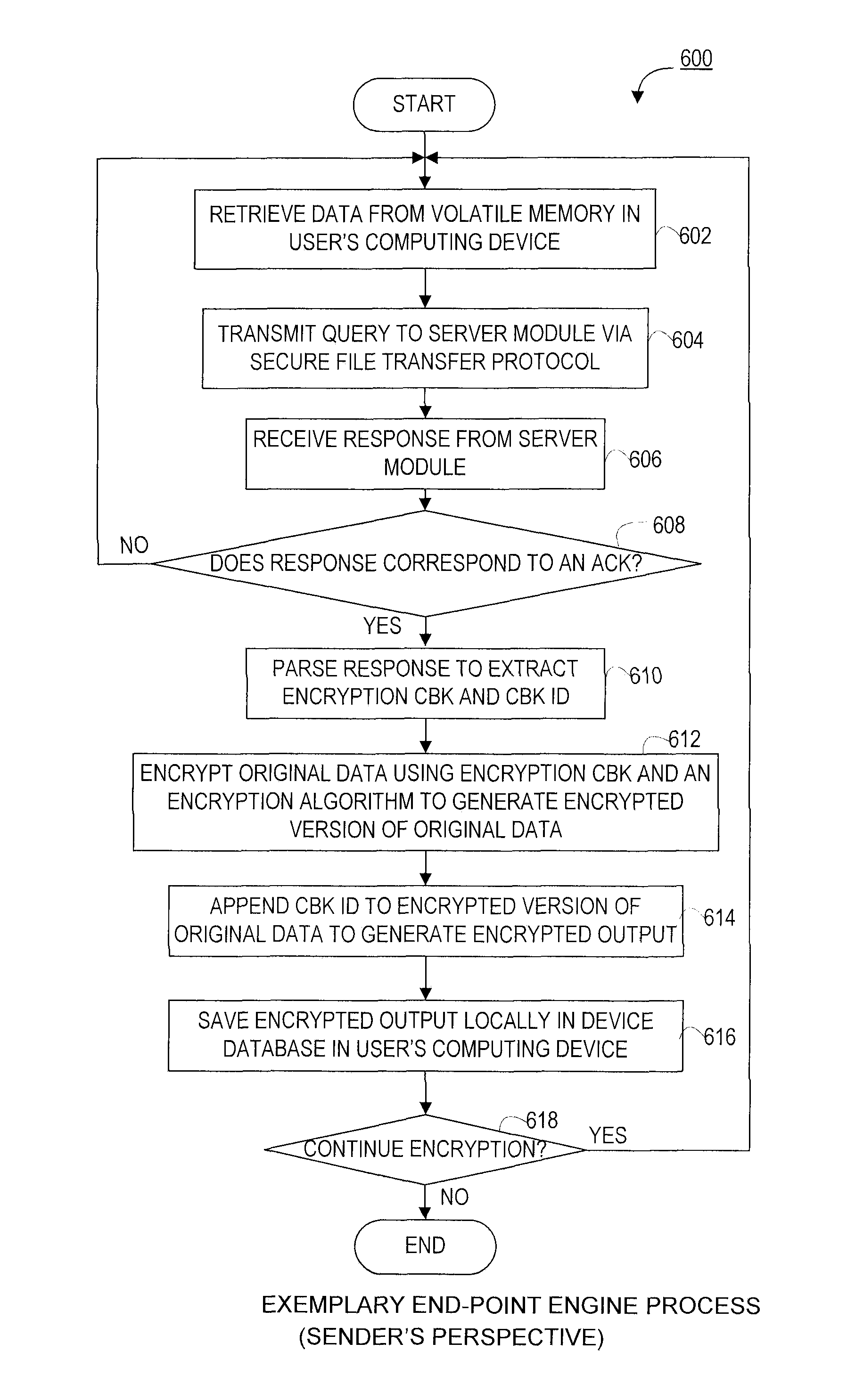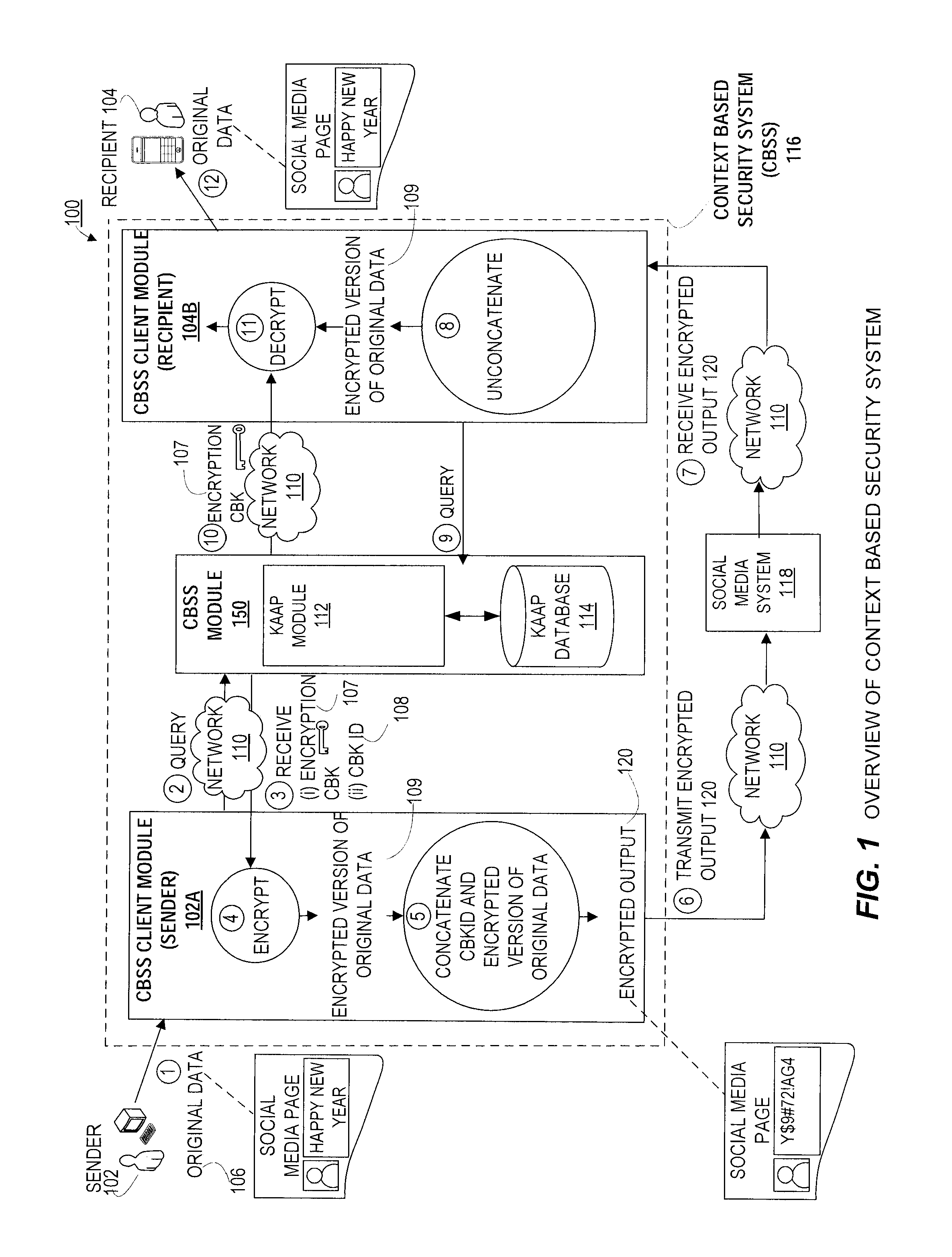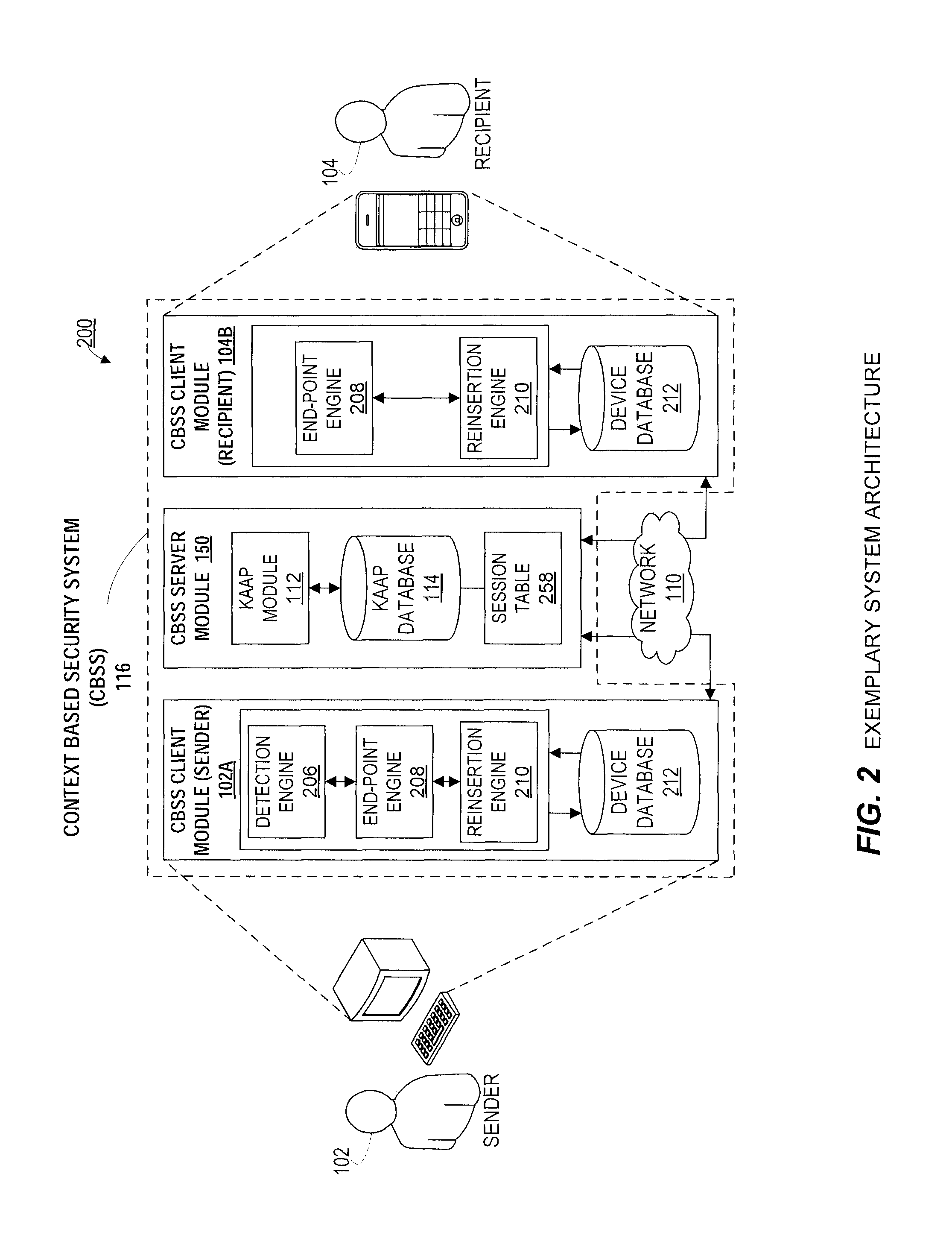Systems and methods for providing information security using context-based keys
- Summary
- Abstract
- Description
- Claims
- Application Information
AI Technical Summary
Benefits of technology
Problems solved by technology
Method used
Image
Examples
Embodiment Construction
[0034]Prior to a detailed description of the disclosure, the following definitions are provided as an aid to understanding the subject matter and terminology of aspects of the present systems and methods, are exemplary, and not necessarily limiting of the aspects of the systems and methods, which are expressed in the claims.
DEFINITIONS / GLOSSARY
[0035]Context-based key (CBK): generally speaking, a key used in connection with encrypting or securing original data, wherein the key is generated based on the parameters of the environment / framework wherein the original data is generated, such that each key can be unique for each item of data generated. Examples of parameters affecting the “context” in which data is created may include, but are not limited to: user (user ID), application program being used to create the data (application program ID), specific computing session (session ID), computing device being used to create the data (computing device ID), network address, etc.
[0036]Conte...
PUM
 Login to View More
Login to View More Abstract
Description
Claims
Application Information
 Login to View More
Login to View More - R&D
- Intellectual Property
- Life Sciences
- Materials
- Tech Scout
- Unparalleled Data Quality
- Higher Quality Content
- 60% Fewer Hallucinations
Browse by: Latest US Patents, China's latest patents, Technical Efficacy Thesaurus, Application Domain, Technology Topic, Popular Technical Reports.
© 2025 PatSnap. All rights reserved.Legal|Privacy policy|Modern Slavery Act Transparency Statement|Sitemap|About US| Contact US: help@patsnap.com



